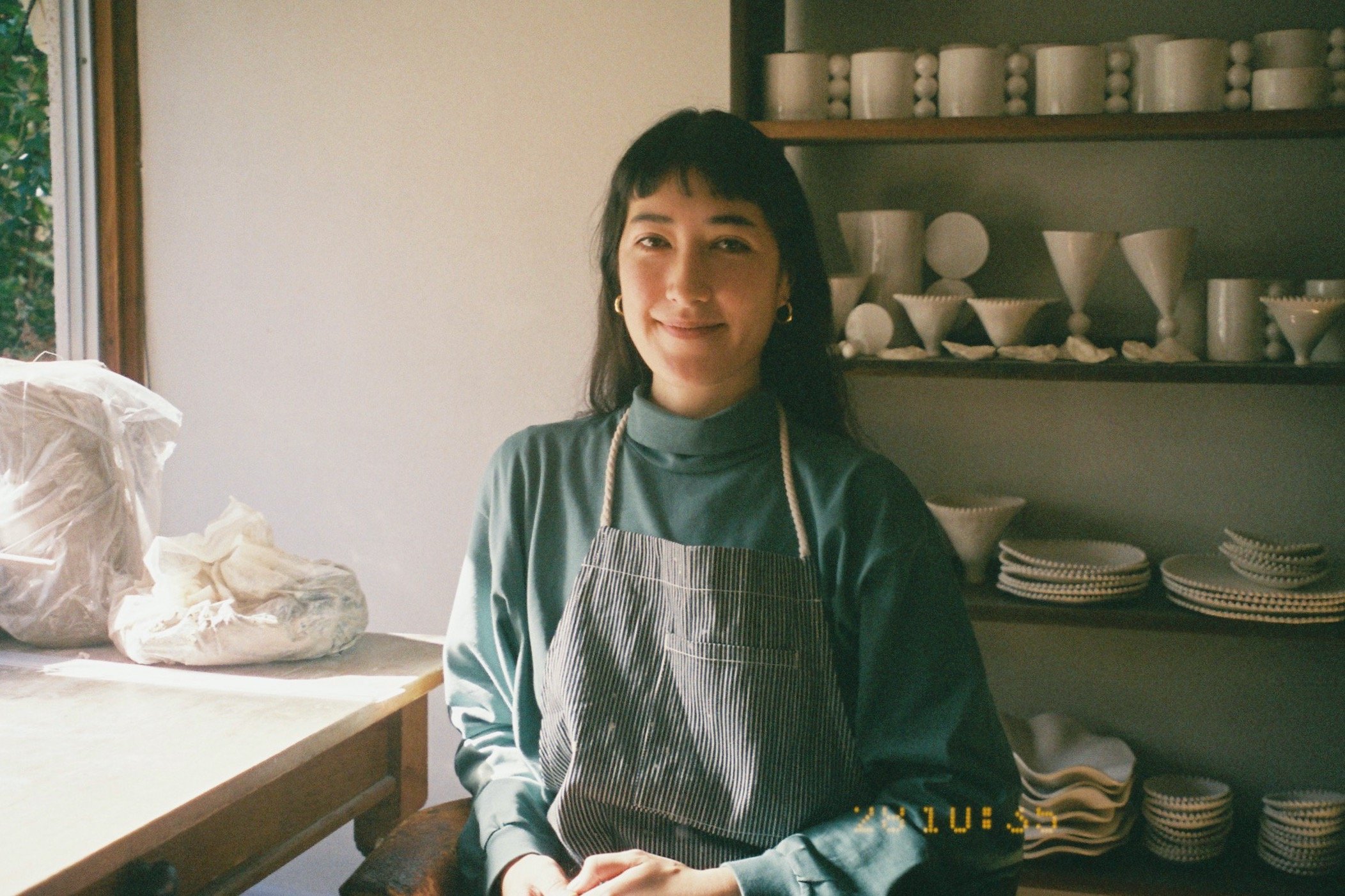A look into the atelier of Aya Courvoisier: ceramic arts inspired by life
Born and raised in Fukushima Prefecture to a Japanese mother and French father, Aya Courvoisier was a ballet dancer for most of her life, pursuing the art from a young age with the intention of dancing on stage professionally. Eventually, those dreams were put to the wayside, and what came next for her can be difficult to pin down. Her resume contains stints as a vintage fashion buyer and time at the iconic fashion house, Kenzo, during her time living in Paris after graduating high school. Along the way, she picked up ceramic making at PMPM de la forge under Marie Latrou as a means to maintain a creative outlet in her post-ballet life. She then moved back to Japan in 2019, this time in the capital city of Tokyo, setting up shop and producing new pieces for a new market.
In a more modest area of the popular and stylish Shimokitazawa neighborhood, Courvoisier operates her atelier, creating hand-made ceramics that, in a way, are an expression of her personal experiences and everyday life.
The modest, yet character-filled, workshop is based out of a Showa-era apartment building overgrown with foliage. Fruit-bearing plants are scattered throughout the grounds. The entrance area is outfitted with patina-rich wood flooring and beyond that, there is a tatami room illuminated with two large windows, one of which has mikan oranges growing in front of it that Courvoisier will grab from inside for a mid-day snack. Vintage furnishings with notable wear-and-tear that perfectly suit the interior are laced throughout, sourced from various local shops and online markets, and a straw hat for use in the garden hangs above the sliding door between the two sections.
It’s in the tatami room where a majority of Courvoisier’s ceramic work is done, evident by the desk outfitted with carving tools and marks from rolled clay, along with the eye-catching stainless steel kiln in the corner with intense heat emanating from within.
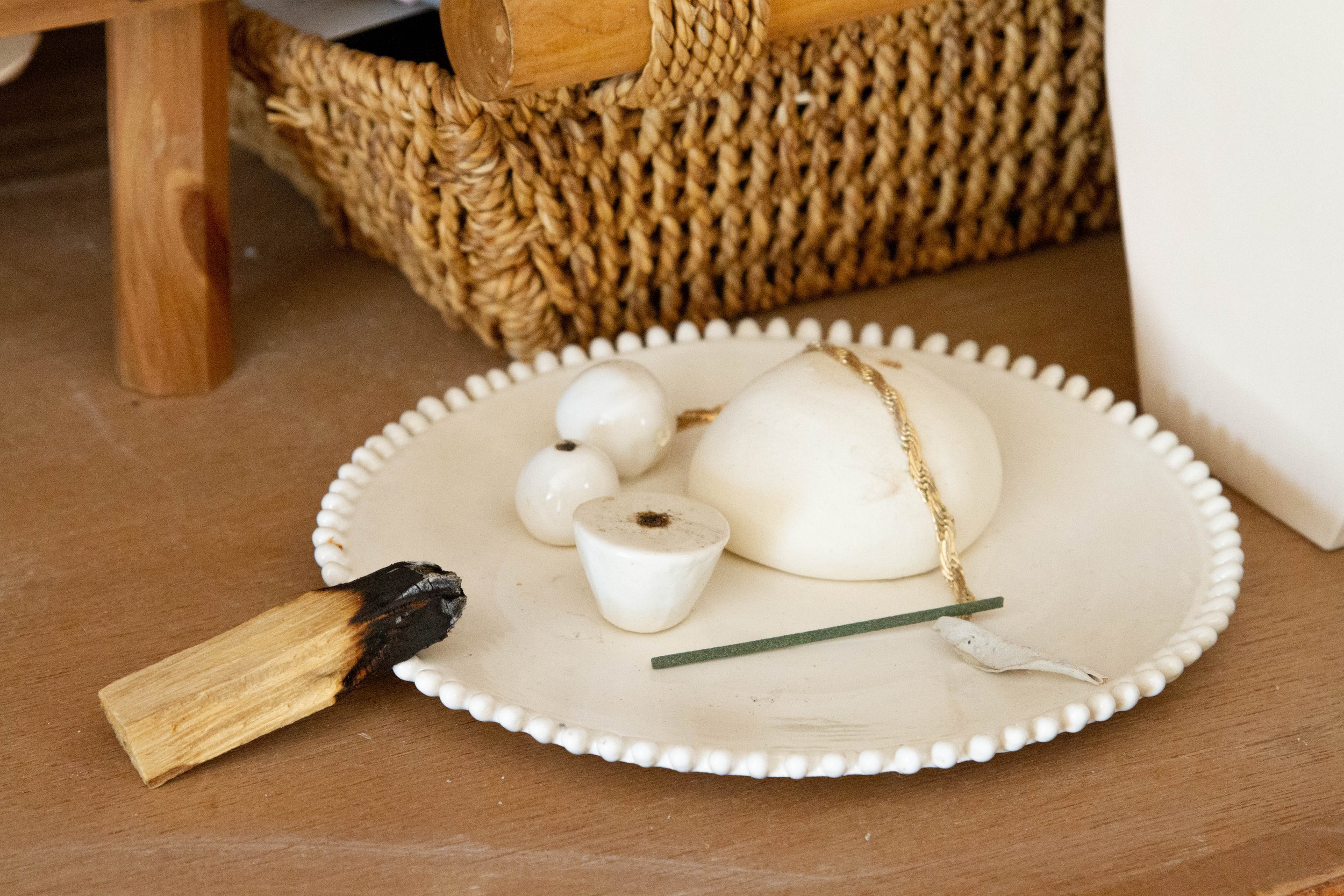
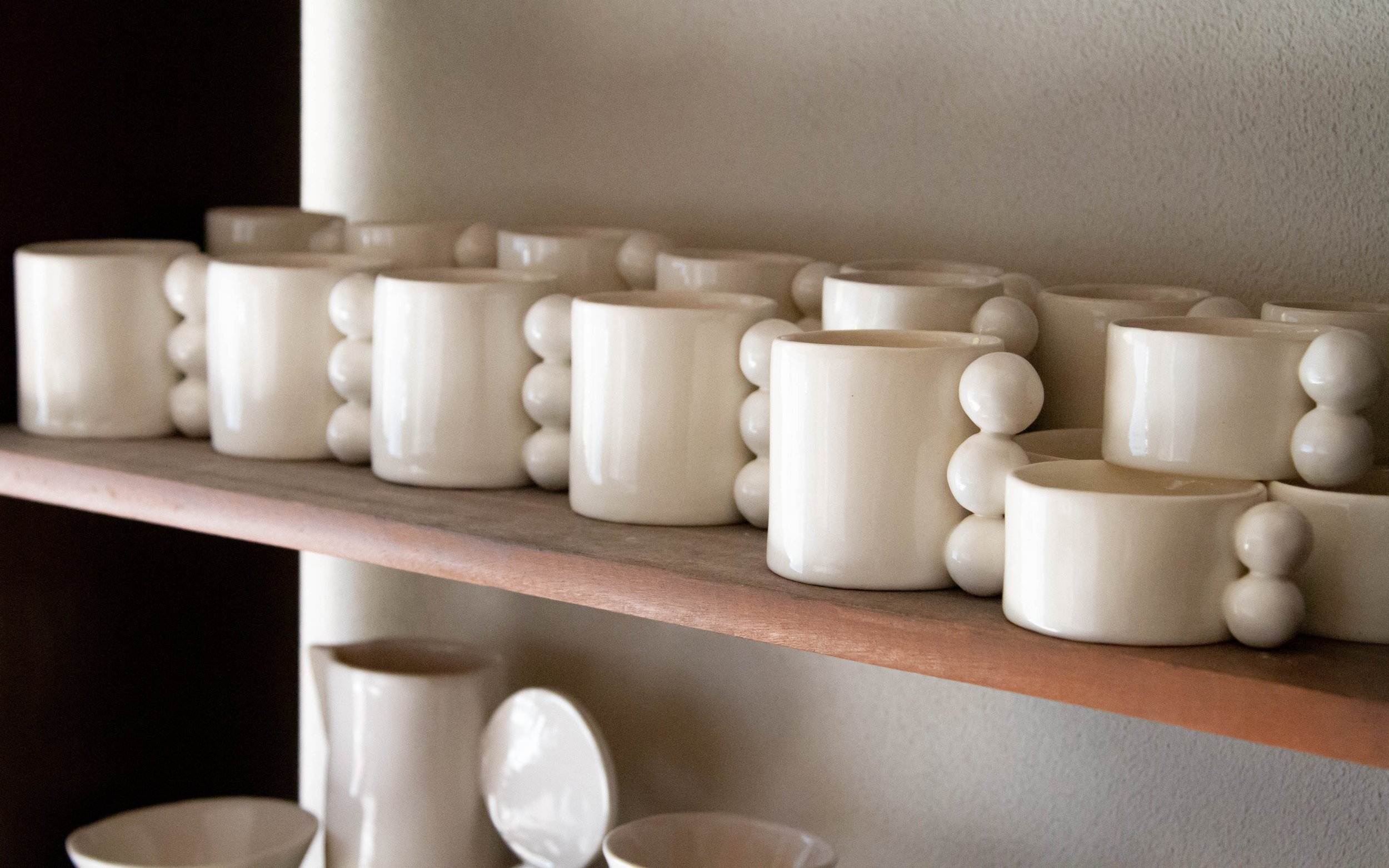
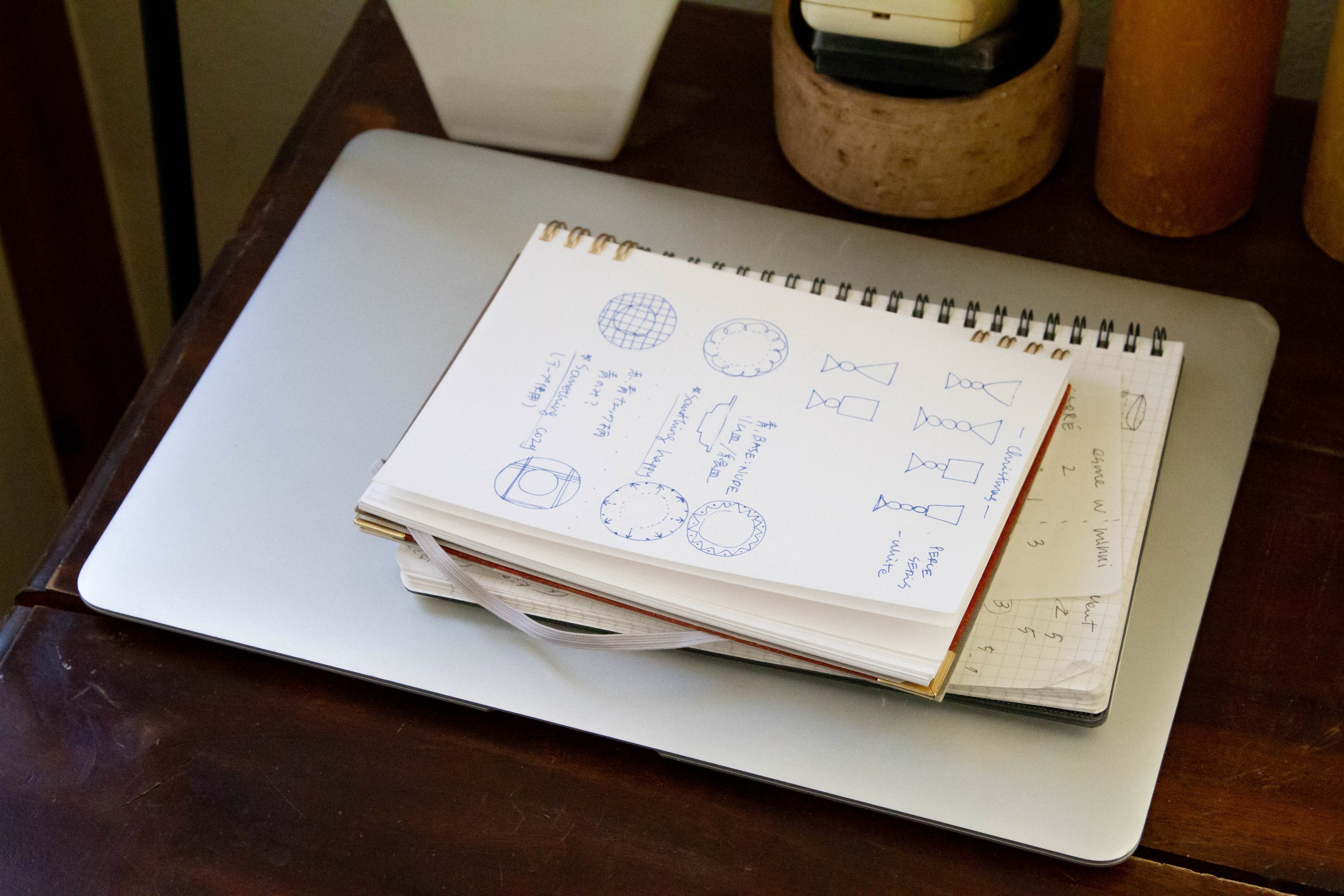
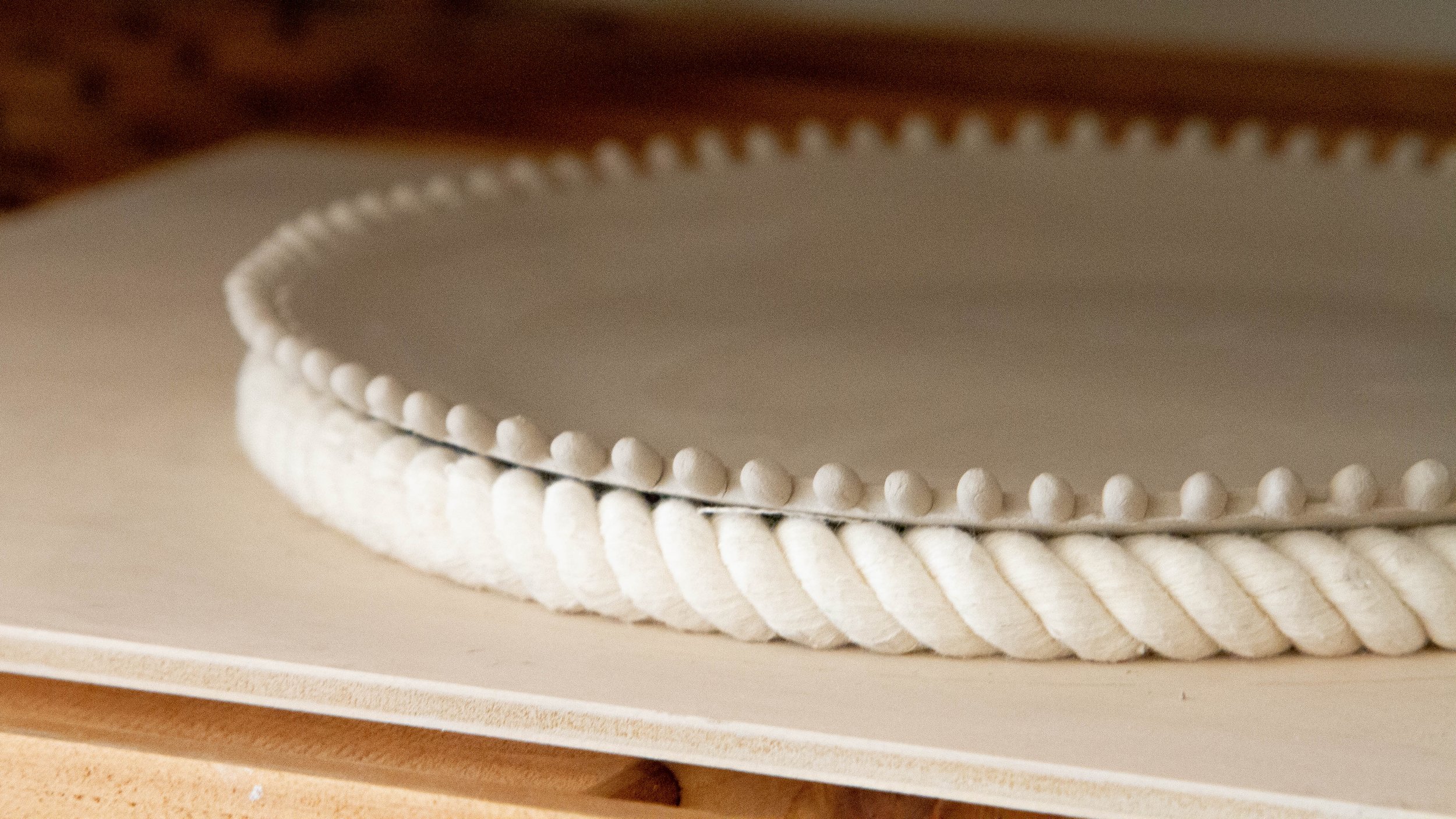
On the other side of the room is an array of ceramics, both finished pieces and works-in-progress, stacked on a wooden shelf and within the corner closet that has since had its doors removed. Courvoisier’s ceramics predominantly come in a creamy muslin shade of off-white that emanates a subtle golden glow in the room’s natural sunlight.
Courvoisier’s ceramic work is created using a method known as tatara, characterized by clay slabs that are combined and manipulated on a flat board. Using this technique, she is able to form shapes and designs for her pieces that are inspired by her own life. With the DANSE series of ceramics, for example, through name and aesthetic, one can see Courvoisier’s ballet roots on full display. Smooth waves of ceramic change in depth and degree, allowing the pieces to capture the flow of a balerina’s tutu in motion.
The distinct PERLE series is characterized by geoemetric spheres that adorn plates, incense holders, and mugs in varying ways. As the name suggests, this collection was inspired by pearl jewelry, specifically a pearl necklace belonging to Courvoisier’s own grandmother. Each of the small beads lining the edges are rolled and attached to the base portion of each piece by hand. Admittedly tedious work, according to Courvoisier, but one that contributes to each specific piece’s charm, perhaps a nod to her Japanese side’s appreciation for “wabi-sabi” design.
One of Courvoisier’s most notable approaches to design is her sense of restraint. To her, there is an essential balance needed for her pieces to truly stand out, where more isn’t always necessarily better. “I feel that sometimes the more I add, the more it takes away from the piece,” she says, often opting to implement one additional design detail, such as a simple red or blue rim or a mono-colored graphic imprinted with distinct gosu pigmentation, instead of hyper-complex patterns or color motifs.
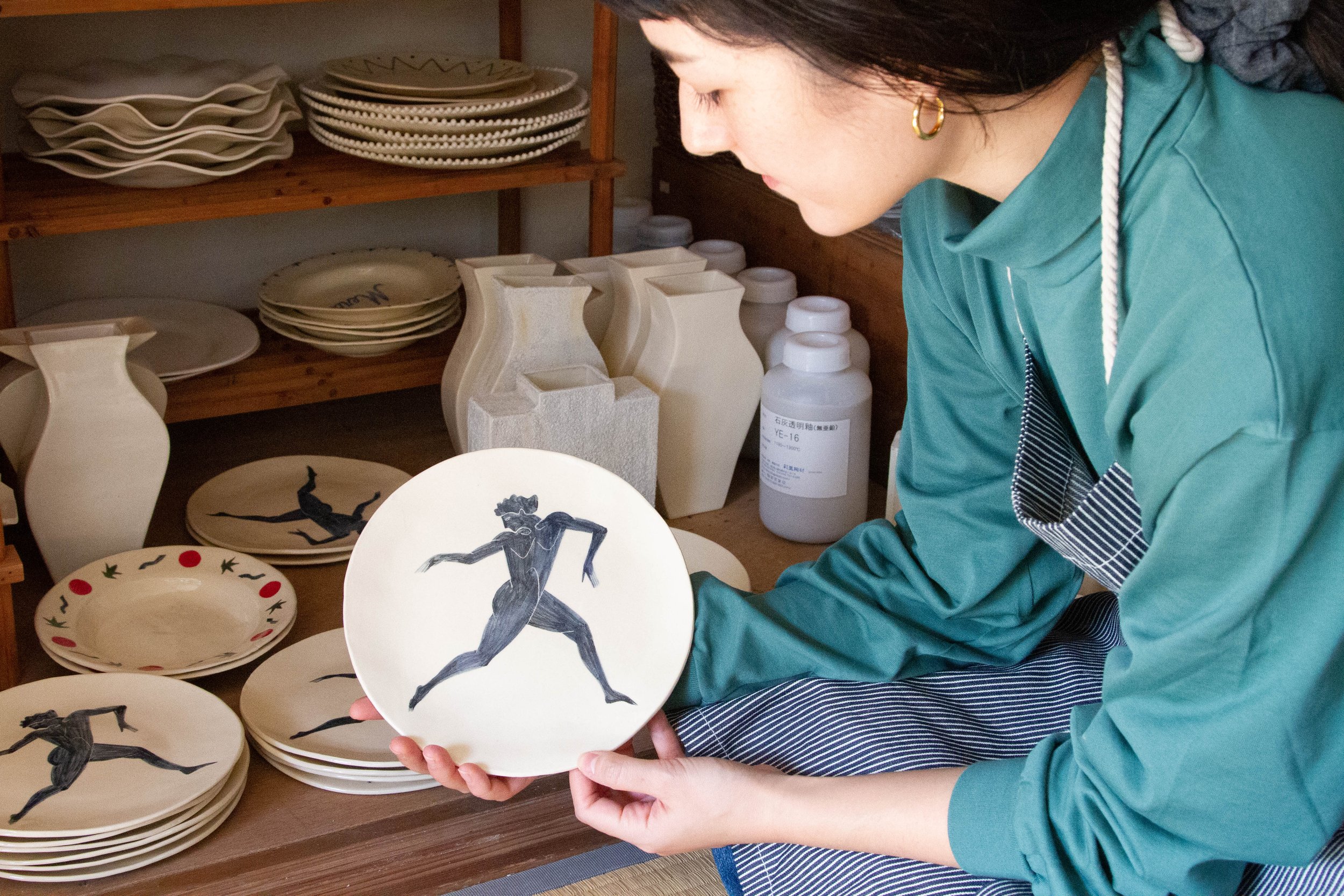
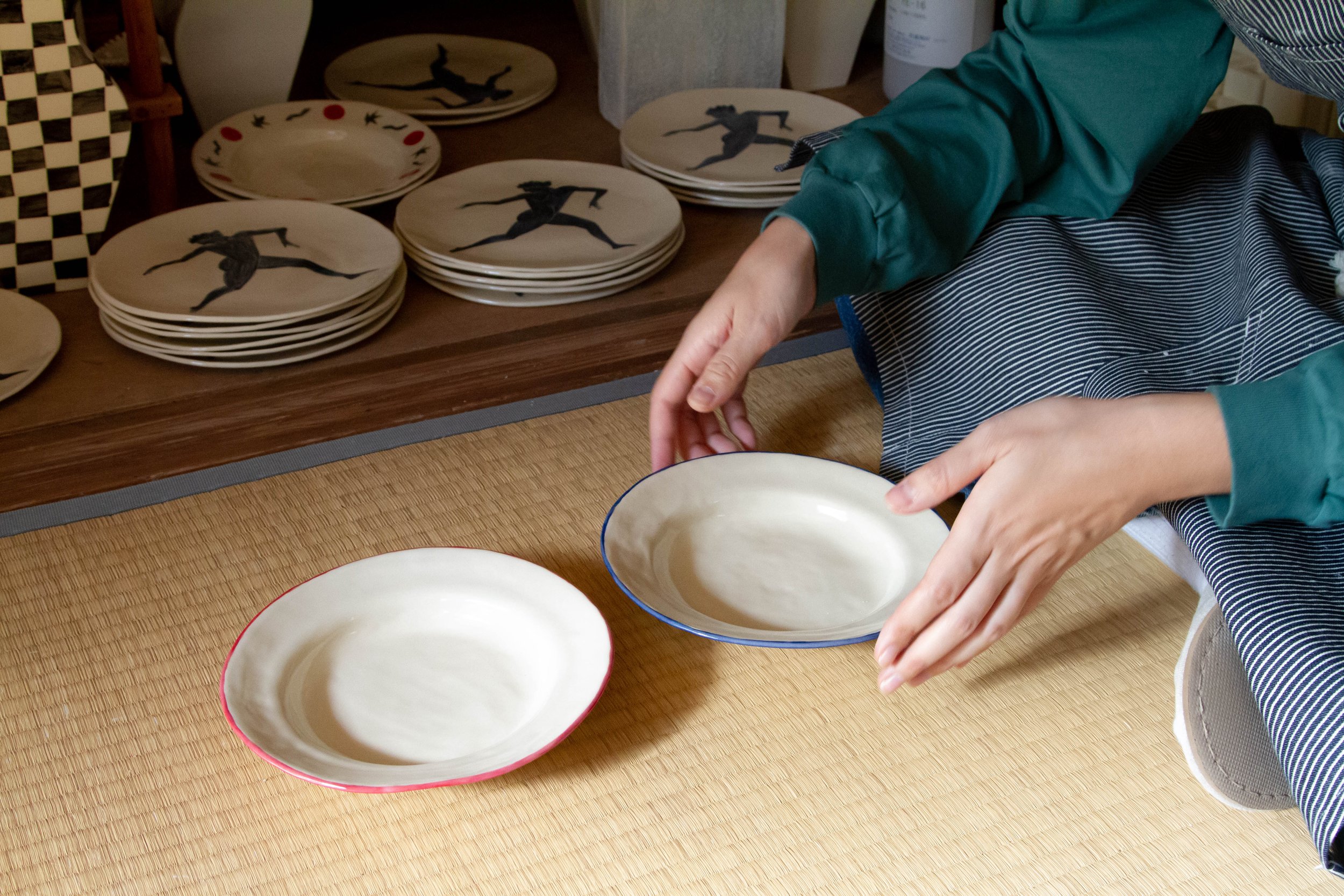
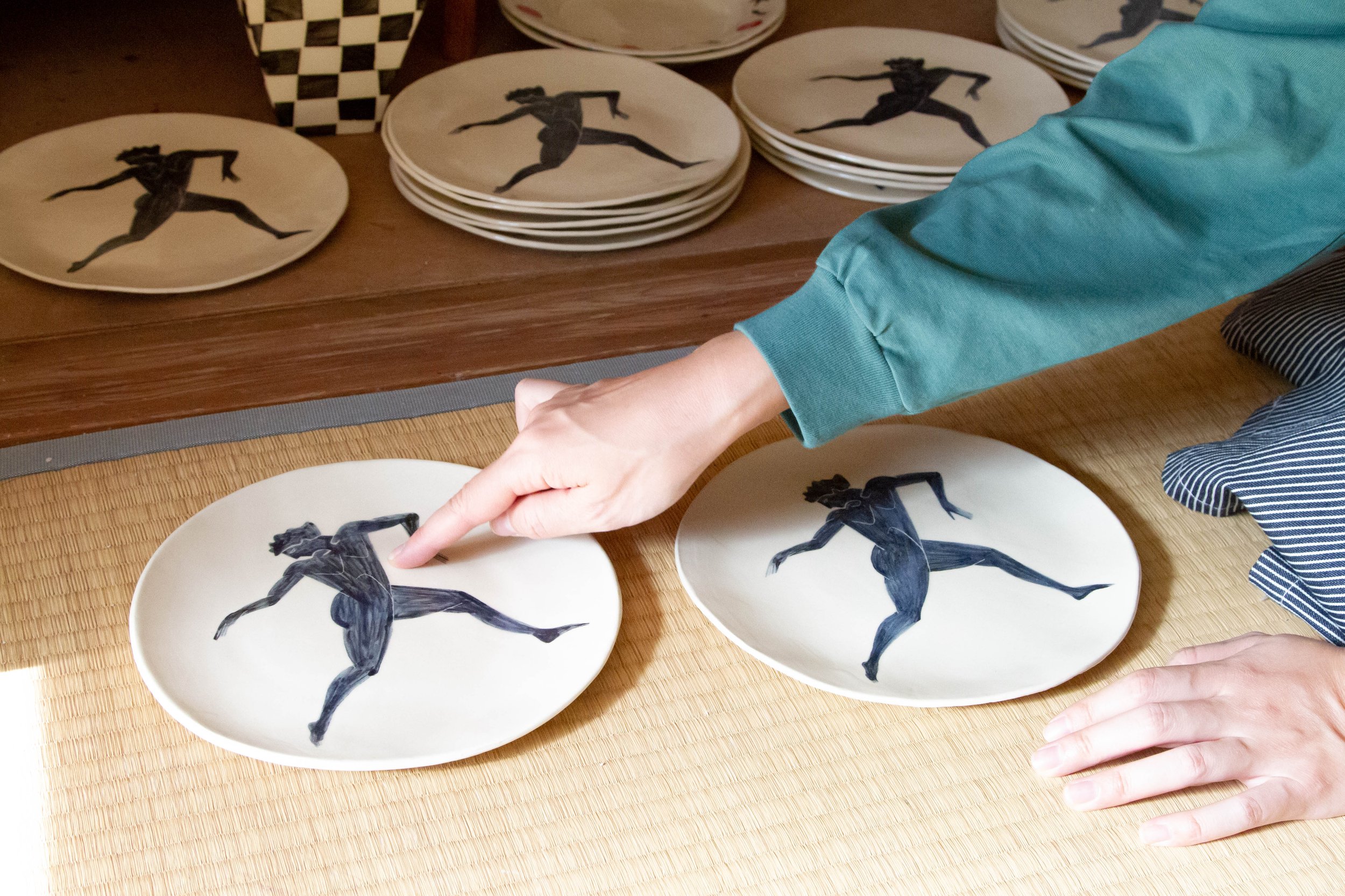
Courvoisier’s works are sold at a number of select shops in Japan, predominently in Tokyo, including Doinel in Kita-Aoyama and Esmerelda Service Department in Tomigaya, though there are retailers in Toyama Prefecture and her home prefecture of Fukushima with her ceramics amongst their offerings. In addition to her ceramic work, Courvoisier curates vintage lifestyle goods, such as last-century tableware and small furnishings to sell on her website.
While Courvoisier’s path would be difficult to cite as conventional, it’s one that is characterized by artistry and creativity that are brought to life in the form of her ceramic work. Between her three homes of Fukushima, France, and now Tokyo, she brings a little bit of each journey and experience with her to contribute to her next piece of work, be it objects for everyday life or a story to tell to others.

